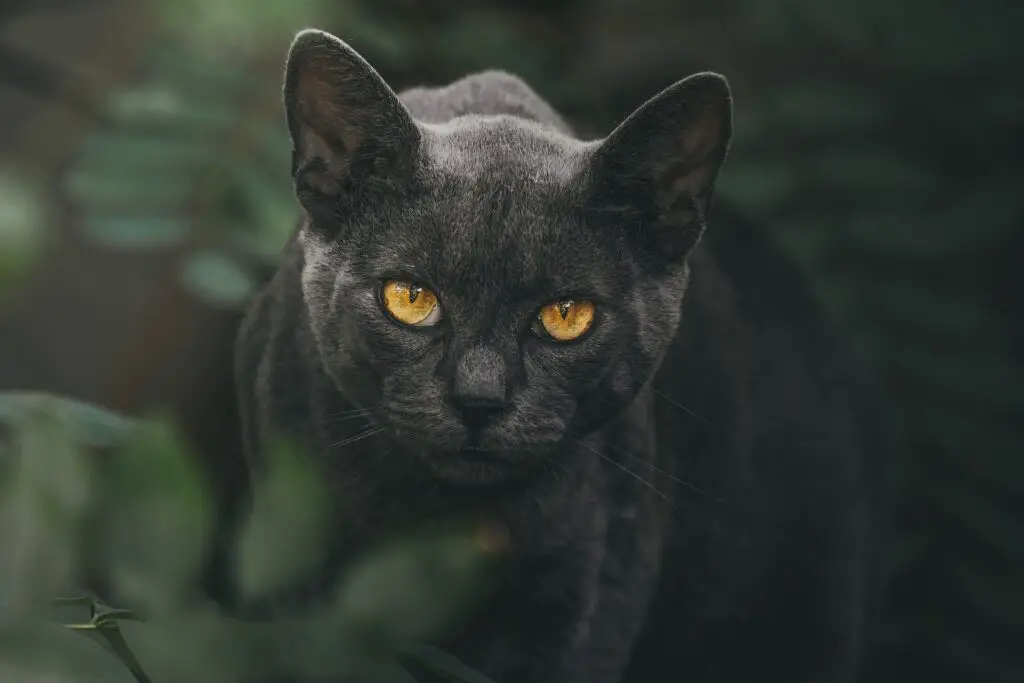
Cats are known for their mysterious and captivating eyes, but did you know that there’s a whole science behind those gorgeous peepers?
From night vision to eye shape, let’s dive into the fascinating facts about cat eyes that will make you appreciate these furry felines even more.
Cats are nocturnal creatures, and their eyes are specifically designed for seeing in the dark.
Their pupils can dilate to an incredible size, allowing them to capture as much light as possible.
In fact, a cat’s pupils can be up to 8 times larger than a human’s!
This is why they can see so well in the dark. They also have a special reflective layer in their eyes called the tapetum lucidum, which acts like a mirror and bounces light back through the retina.
This helps to amplify the light that enters their eyes, making it possible for them to see in low light conditions.
Cats have a much wider field of view than humans – they can see up to 200 degrees, while humans can only see 180 degrees.
This means that cats can see much more of their surroundings, even when they’re not moving their head.
This is an advantage when hunting or navigating in the dark. They also have a unique shape to their eyes, which helps them to see in all directions.
Their eyes are positioned on the front of their head, allowing them to have binocular vision (meaning they can see with both eyes at the same time) which helps them to judge distances and depth more accurately.
Cats’ eyes come in many different colors, from the traditional yellow and green, to blue, and even odd-eye.
Odd-eye is a condition where a cat’s eyes are different colors, usually one blue and one yellow eye.
This condition is caused by the amount of pigmentation in the iris, but it is not harmful to their vision.
Additionally, cats have an extra eyelid, called the nictitating membrane, that acts like a windshield wiper to keep their eyes clean and moisturized.
This third eyelid is located on the inner corner of the eye and can be seen when the cat is sleepy or relaxed.
Cats’ eyes are sensitive to light and can be affected by certain conditions, such as cataracts, which can cause the lens of the eye to become cloudy.
This can cause vision loss and should be treated by a veterinarian.
Furthermore, cats use their eyes to communicate with other cats and humans.
They use their pupils to show their mood, if they are relaxed or happy their pupils will be dilated, while if they are feeling threatened or aggressive they will constrict their pupils.
It is a subtle but important way for cats to convey their emotions.
Lastly, cats’ eyes have a special membrane called the “eyeshine” that reflects light, making them appear to glow in the dark.
This is due to the tapetum lucidum that we mentioned earlier, which amplifies the light and reflects it back out of the eye.
Cats also have a natural instinct to protect their eyes from injury.
They have a reflex that causes their eyes to close when something comes too close to them. This is why you might see your cat’s eyes close when you pet their head or give them a kiss on the nose.
In conclusion, cats’ eyes are truly fascinating, with a unique design and many special characteristics that make them perfectly suited for their nocturnal lifestyle.
From night vision to eye shape, there’s so much to learn and appreciate about these captivating creatures.
Next time you see your feline friend, take a moment to look into their eyes and see the mysteries that lie within.
Lee Harris
Latest posts by Lee Harris (see all)
- Homemade Cat Cookies: A Purr-fect Treat for Any Occasion - February 7, 2024
- Chic Feline Elegance: Crafting a Multi-Tiered Black Cat Cake - February 6, 2024
- Purr-fectly Delicious: Black Cat-Themed Donut Delight - February 5, 2024

